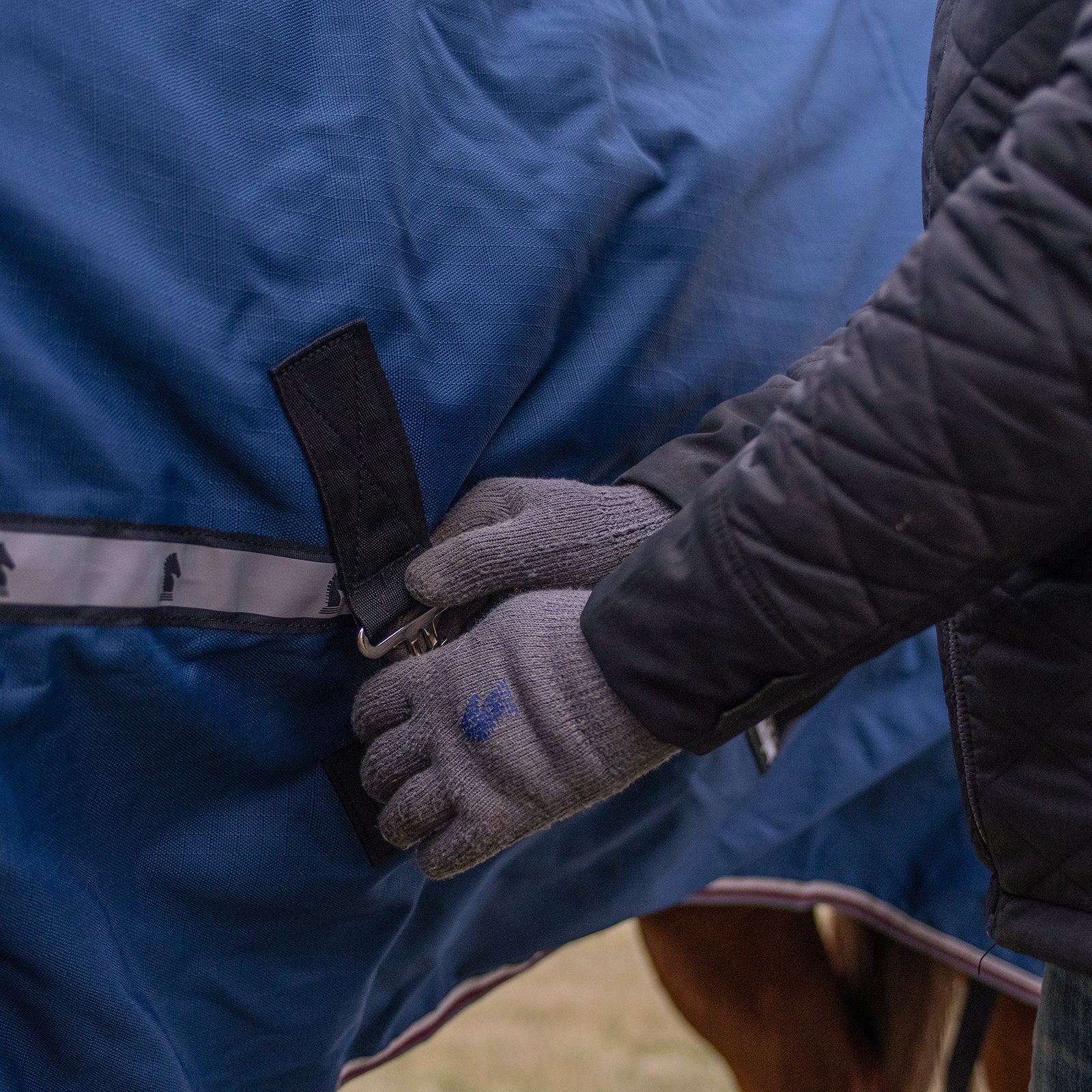
Determining your Horses Winter Blanket
Blanketing your horse in winter helps protect it from cold, wet, and windy weather, which can lead to discomfort, weight loss, or even illness—especially for horses that are clipped, older, underweight, or not acclimated to colder climates. A blanket helps maintain body heat and prevents the horse from burning extra calories to stay warm, which is particularly important if forage or feed intake is limited. Additionally, if your horse is kept in work during winter and has a clipped coat, a blanket is essential to compensate for the loss of natural insulation. While healthy horses with full winter coats and access to shelter may not always need blanketing, it becomes a practical and sometimes necessary tool to ensure your horse remains healthy, comfortable, and in good condition throughout the colder months.
To determine the correct blanket size for your horse, you need to take an accurate measurement of its body length. Start by using a soft measuring tape and measure from the center of the horse’s chest, along the side of the body, and straight back to the edge of the tail where the blanket would naturally end. Make sure the tape follows the contours of the horse's body and does not dip or gap. The measurement you get—typically in inches—corresponds to the blanket size. For example, if your horse measures 75 inches, you would generally select a size 75 blanket. It's important to refer to the sizing chart provided by the specific blanket manufacturer, as sizing can vary slightly between brands. Always ensure the blanket fits snugly but comfortably, without restricting movement or causing pressure points. A properly fitted blanket helps keep your horse warm and dry without causing discomfort or rubs.
To determine what type of blanket your horse needs, you should consider several key factors including the weather conditions, your horse’s living situation, age, health, and whether it has a full or clipped coat. In cold, dry climates, a medium or heavy-weight blanket may be appropriate, while in wet or snowy conditions, a waterproof turnout blanket is essential to keep your horse dry and warm. Horses that are clipped or have difficulty maintaining weight often need more insulation, such as a heavier blanket or layering options. If your horse is turned out in a pasture, choose a durable, waterproof turnout blanket with a secure fit, whereas a stable blanket is more suitable for horses kept primarily indoors. Also, consider breathability, ease of movement, and proper fit to prevent rubbing or discomfort. Evaluating your horse’s specific needs and environment will help you choose the right type of blanket to ensure comfort and protection throughout the winter.
In conclusion, blanketing a horse is an important consideration when monitoring the weather, especially during the colder months. Sudden drops in temperature, rain, snow, or strong winds can all impact your horse’s comfort and health, making it essential to assess weather conditions daily. By checking the weather radar and anticipating changes, you can make informed decisions about when to blanket your horse and what type of blanket to use. This proactive approach helps ensure your horse stays warm, dry, and healthy throughout the season, particularly if they are clipped, older, or otherwise sensitive to cold weather. Ultimately, thoughtful blanketing based on weather conditions is a key part of responsible winter horse care.
